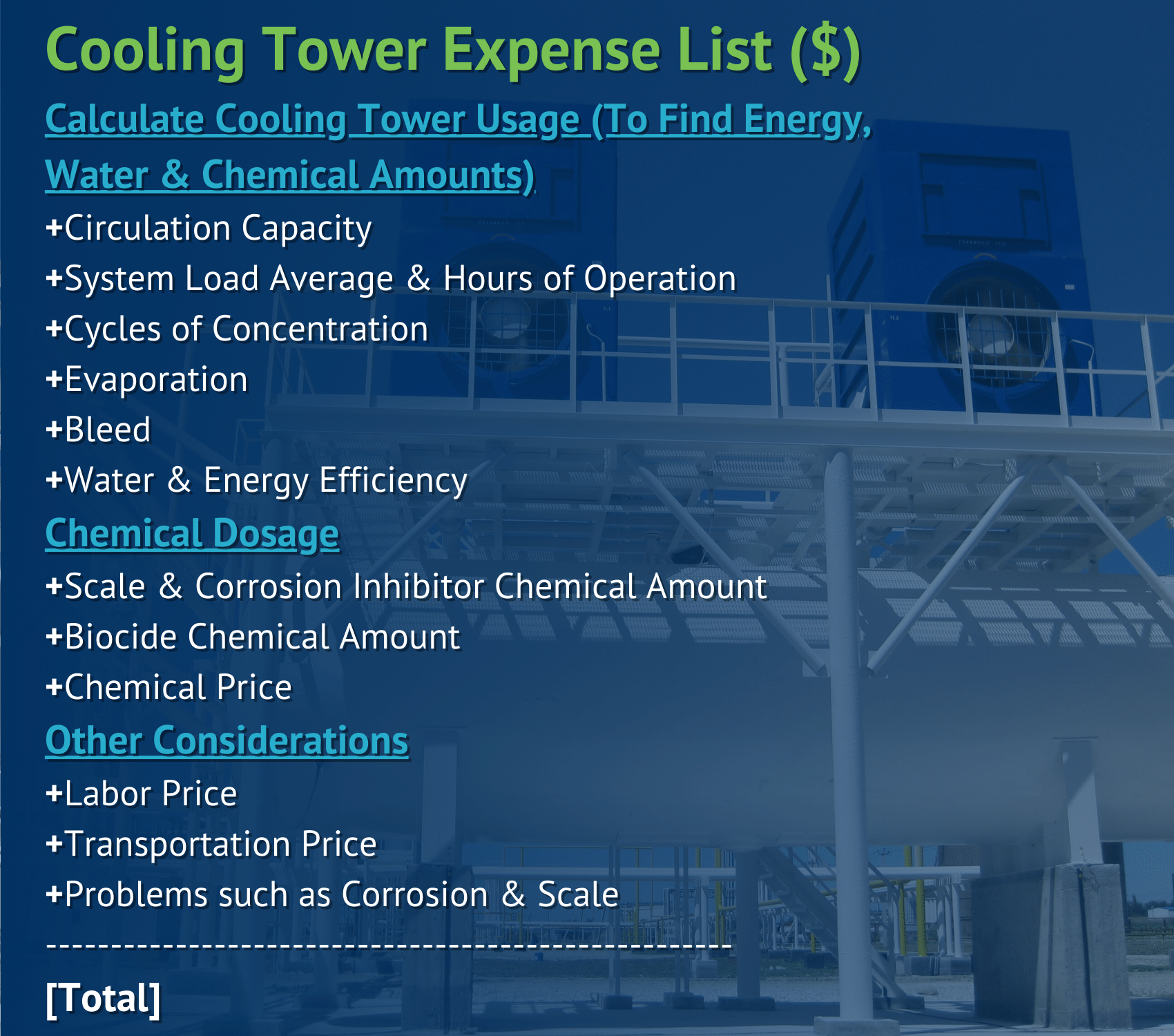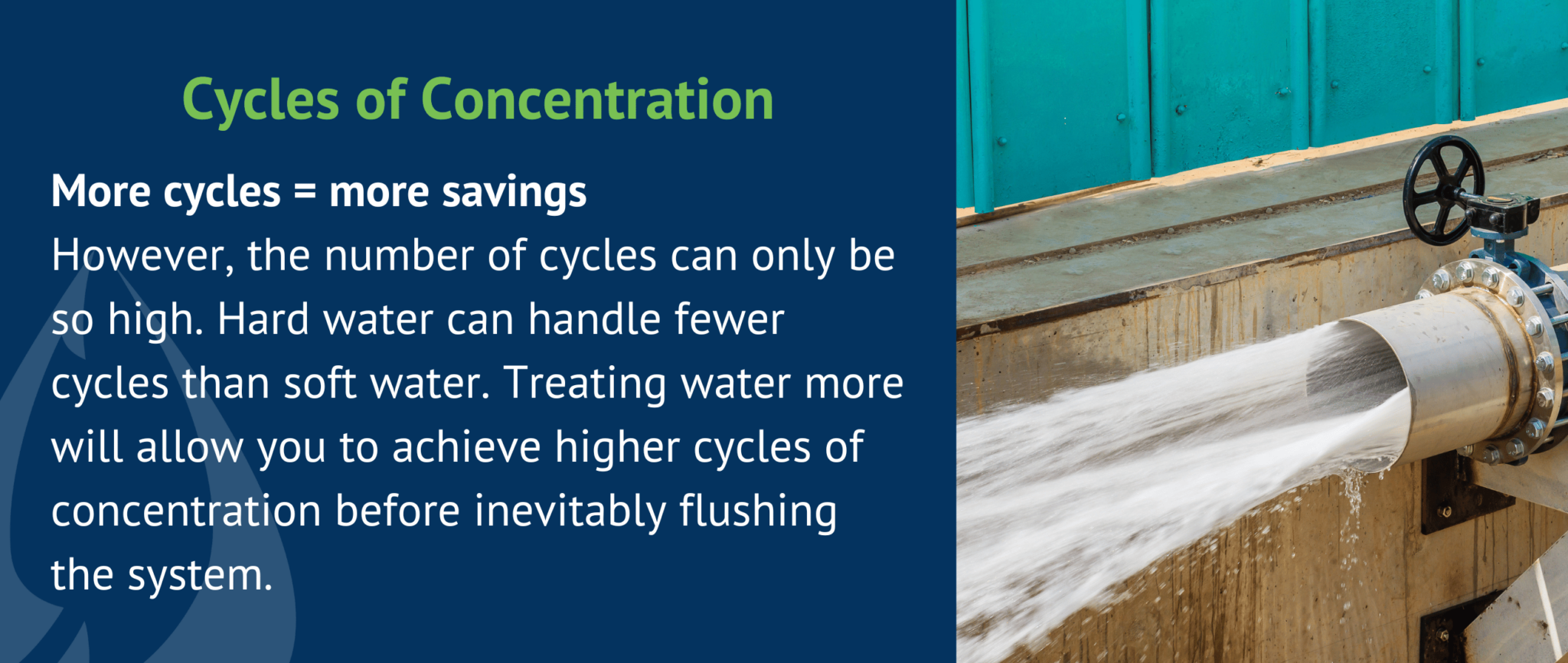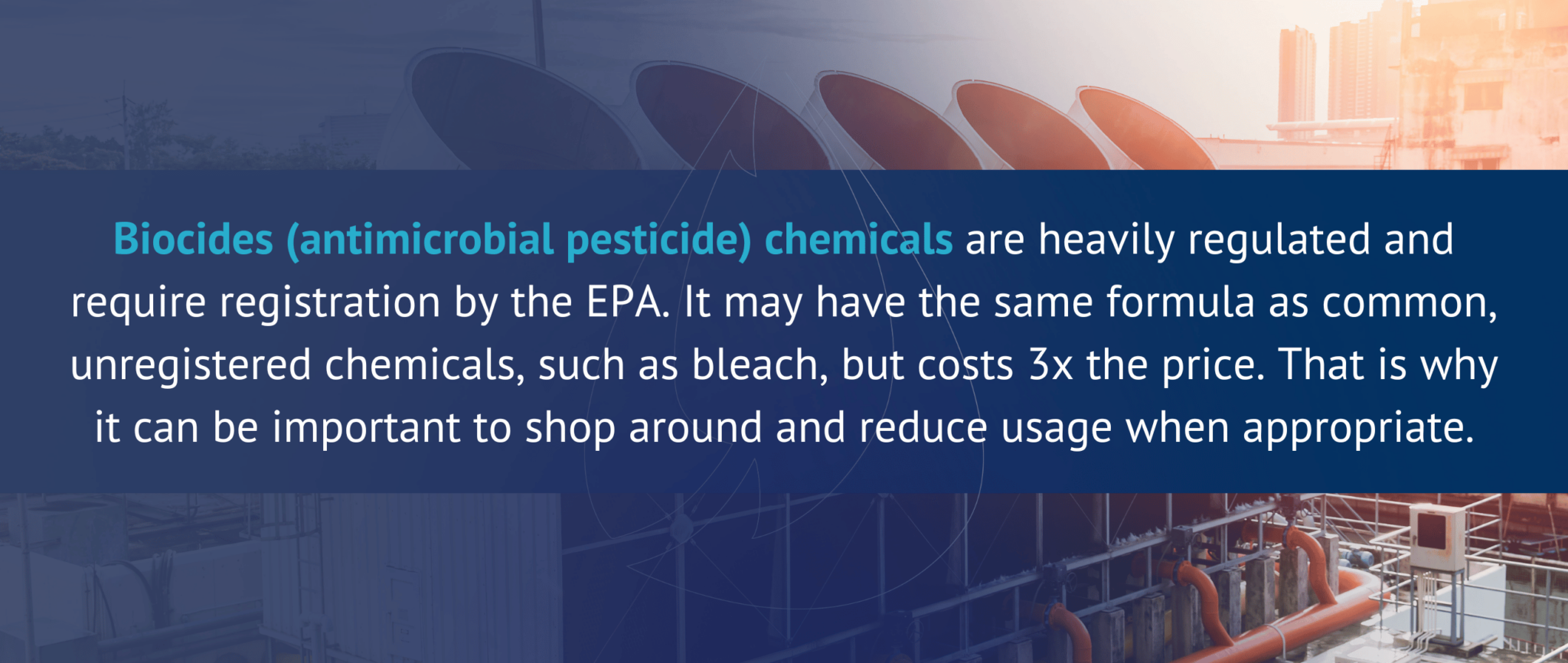
This article will explore the significant expenses for your cooling tower maintenance. Your cooling tower usage should be tracked and analyzed to find the water and energy efficiency, as well as the chemical dosages necessary. Additionally, there are other costs such as labor, transportation, and problems that may occur such as scaling.
Note- Before the dosing calculations can be performed you will need to determine the tower tonnage, average cooling load in degrees Fahrenheit, total system volume, annual run time of the system, the makeup water calcium hardness, total alkalinity, and maximum skin temperature (to determine cycles of concentration.)
This will help you find energy, water, and chemical usage to calculate your total expenses with. These calculations should be done annually to factor in seasonal variations in cooling tower operation.
The pump plate is a very good place to start to look for this, but you will find that the capacity is not often there, or the plate has long since been lost. Chiller capacity is usually your best bet. If you know the tonnage of the chiller, multiply that number by three to obtain the approximate pump circulation in GPM. (GPM in a cooling tower is gallons per minute per ton).
Chiller Tonnage x 3 = GPM Circulation
In manufacturing facilities where the system load is relatively consistent, an actual check of the delta T across the condenser is a good indication of the average load; however, you may want to go back and check that reading a couple of times over a week or so to ensure that it is a reasonable estimate. It is important to tell with a fair amount of accuracy what the run-time on the chiller system is, based upon their production time. For comfort systems, check the chiller hour meter and divide the number by the age of the chiller to obtain annual hours.
Cooling towers do not have the same run time during each season of the year. Factor in the additional load during the hot months, the lesser load during cooler months, and the time the cooling tower is shut off. In the Midwestern states, for example, many medium-sized chillers will operate between 1800 and 2200 hours per year if they are properly sized and maintained.

Using a saturation index, the calcium hardness and total alkalinity levels you should obtain during a survey of the cooling tower system; predict the cycles of concentration you can safely maintain while still preventing scale in the system. Generally, you do not want to exceed 5 to 6 cycles of concentration, as mud can become a problem.
With the circulation rate in GPM, the average load, and the run time you obtained in the survey, calculate the annual evaporation using the following formula:
GPM x .001 x Delta T = GPM Evaporation
GPM Evaporation x 60 x Annual Hours of operation = Annual Gallons of Operation
Cooling tower blowdown can be done less often if the water hardness in your area is not hard (in addition to a proper chemical water treatment program). To calculate bleed, you use this formula:
Annual Evaporation/(Predicted Cycles – 1) = Annual Bleed in Gallons
The above factors will heavily impact the efficiency of a cooling tower. Additionally, modern cooling towers and towers equipped with controllers will operate more efficiently. The goal is to keep your water cycles down and energy used as low as possible. Make sure to add all related energy and water costs involved to your calculations.
For cost-saving techniques related to your cooling tower, consider reading the following article:
Scale and corrosion reduce heat transfer capabilities by impeding the heat transfer surface. Treating to help prevent them is essential. It is common to use 20 ml of treatment per 100 gallons of bleed from the system. Use the following formula to calculate the gallons required:
Annual bleed in gallons x 20/378,500 = Gallons of Inhibitor

Due to safety regulations biocides (referred to legally as antimicrobial pesticides by enforcing agencies such as the EPA) are expensive. Consult chemical product marketplaces for the best prices on biocides you can utilize in your cooling tower. You will need to do this calculation for each biocide you intend to use to obtain the total annual gallons of each biocide.
(System Volume/1000) x (oz Biocide/128/1000-Gal System x adds/wk X wks/yr)
To find your chemical dosing price, you will want to go to chemical marketplaces or supplier websites if this is not taken care of by your service provider. Receiving concentrated chemicals and mixing them yourself may be worth it depending on the chemical. Using the most current price of your chemicals, multiply the gallons of product obtained above by the price per gallon. Make sure you are using a pump with a remote controller. In addition to automating your chemical feed, there is valuable water quality tracking that can help you develop an efficient water treatment plan.
How much is your or your employees’ labor worth an hour? Benefits, safety insurance, training, vacation days, retirement, etc. are some of the things to consider when calculating labor costs associated with maintaining a cooling tower.
Driving out to the tower’s location, or multiple buildings can add up over time. You will also need to keep your vehicle or nearby area stocked with the appropriate chemicals, test kits, and other relevant equipment. Also, consider the freight or shipping costs of all your chemicals and equipment.
Maintaining a cooling tower is a science, and there are proper procedures to do it successfully. Common issues that naturally occur in cooling tower systems such as corrosion or scale are necessary to account for when figuring out your real cost of cooling tower operation. Without expertise in cooling tower maintenance, these issues will occur much more often, and the cost will outweigh the savings of keeping it in-house or going with the cheapest service provider.
For consistent service from experts focused entirely on chemical water treatment, contact Chardon Labs. We offer a free survey to examine your system and the necessary chemical water treatment program. Additionally, we can pay for ourselves with our increased efficiency tactics and help prevent problems with our 55 years of field experience in chemical water treatment.
Add all these costs together to budget your cooling tower system appropriately. From here you can determine the areas of improvement necessary. Are you using too much chemical? Are issues such as impeded heat transfer from scale or corrosion making your water or utility bill higher than it should be? Did you have to replace the cooling tower or expensive parts due to a problem that could have been prevented through proper maintenance? Is the water hard in your city and difficult to treat for your system? These are all considerations when looking at cooling tower operating costs. Ultimately, the strategy you implement for managing chemical doses and other maintenance costs will affect your building’s overall maintenance bill. You are welcome to reach out to Chardon Labs for assistance by filling out a contact form or call us at (380) 224-7395.